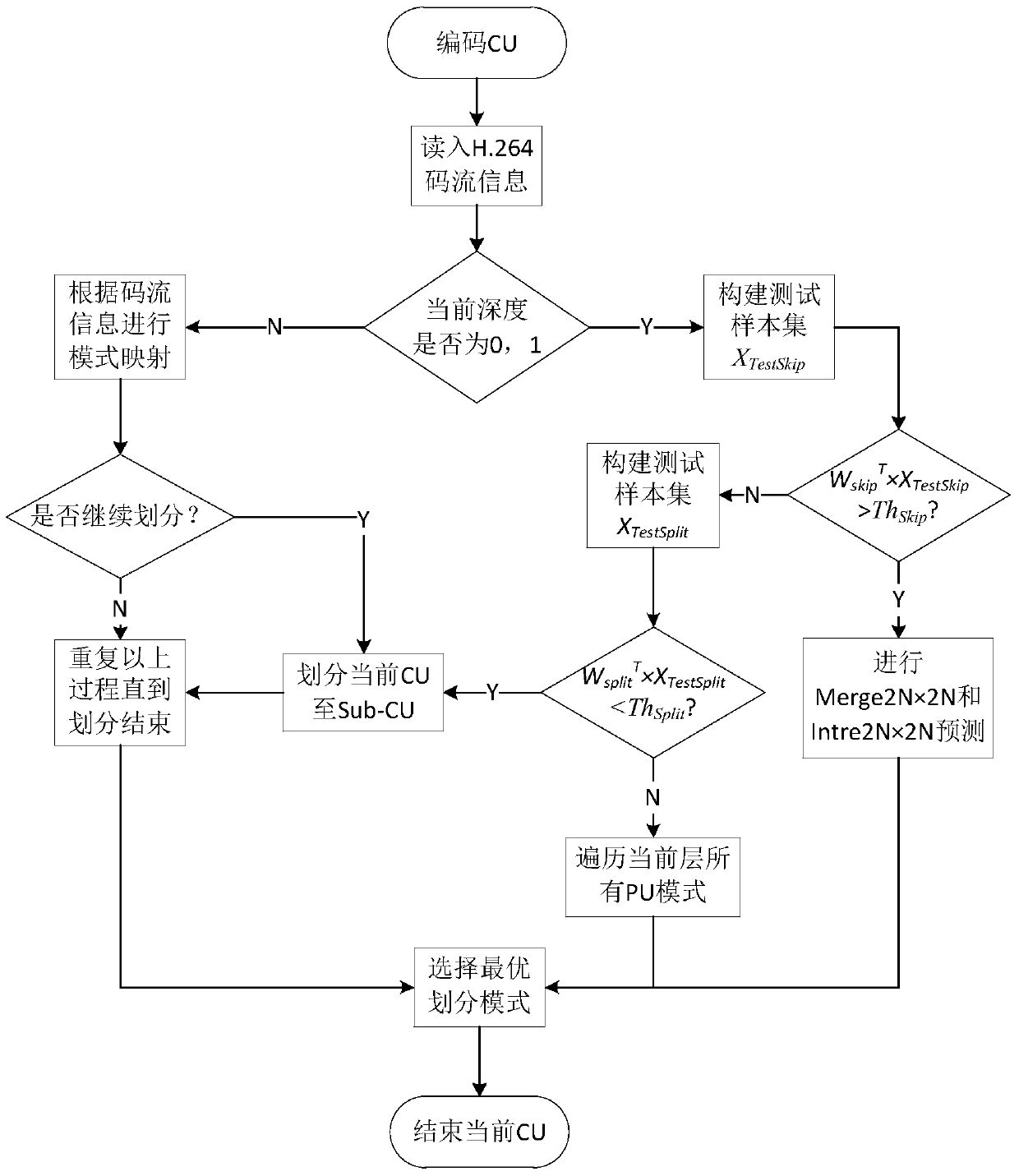A Fast Inter Mode Decision Method Applied to H.264 to HEVC Transcoding
A technology of inter-frame mode and decision-making method, which is applied in the field of transcoding from H.264 to HEVC, and can solve problems such as insufficient consideration and large increase in BD-rate
- Summary
- Abstract
- Description
- Claims
- Application Information
AI Technical Summary
Problems solved by technology
Method used
Image
Examples
Embodiment 1
[0083] First, statistics are made on the distribution of prediction modes of CUs with depths of 0 and 1 in HEVC to determine the feasibility of optimizing the mode decision. Such as figure 1 As shown, through statistical analysis, when the QP is 22, for a video sequence with relatively smooth motion, the ratio of the CU optimal mode to Skip mode when the depth is 0 is 25%-45%, and the CU optimal mode is when the depth is 1 The proportion of Skip mode is 30% to 50%. For video sequences with violent motion, the proportion of the Skip mode as the CU optimal mode is only about 20%. As the quantization parameter (QP) increases, the detail processing of video encoding becomes rougher. The proportion of Skip mode determined to be the optimal mode continues to increase. In a video with smooth motion when QP is 37, The proportion of Skip mode is above 70%. Therefore, when the CU depth is 0 and 1, first determine whether the CU is in Skip mode in advance, and then predict the continue...
PUM
 Login to View More
Login to View More Abstract
Description
Claims
Application Information
 Login to View More
Login to View More - R&D
- Intellectual Property
- Life Sciences
- Materials
- Tech Scout
- Unparalleled Data Quality
- Higher Quality Content
- 60% Fewer Hallucinations
Browse by: Latest US Patents, China's latest patents, Technical Efficacy Thesaurus, Application Domain, Technology Topic, Popular Technical Reports.
© 2025 PatSnap. All rights reserved.Legal|Privacy policy|Modern Slavery Act Transparency Statement|Sitemap|About US| Contact US: help@patsnap.com



